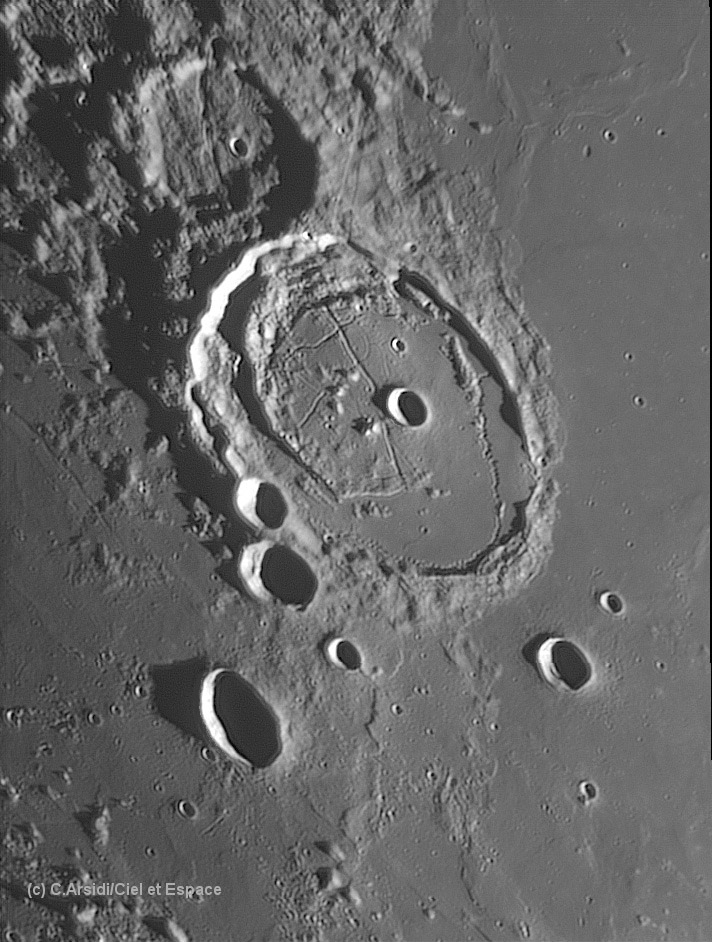
image by Christian Arsidi, Vernouillet, France
Will there always be new photos of familiar objects on which we see new things? I hope so! Posidonius is a favorite LPOD crater, most recently seen in a classic shot by photo reveals that at its southern end (top) the rille bends to the west and literally hugs the western wall until it reaches the low spot in the rim. It looks like it emptied lava out on to Mare Serenitatis, but I have not yet seen evidence of that on the mare. Another thing to notice: the thin linear rille on the left edge is one seen before, but this low lighting suggests a second smaller rille parallels it.
Technical Details:
305mm Meade SCT.
Related Links:
Rükl plate 14
More of Christian’s images
Yesterday's LPOD: A Lost Peninsula
Tomorrow's LPOD: At the Edge of Certainty
COMMENTS?
Register, Log in, and join in the comments.



